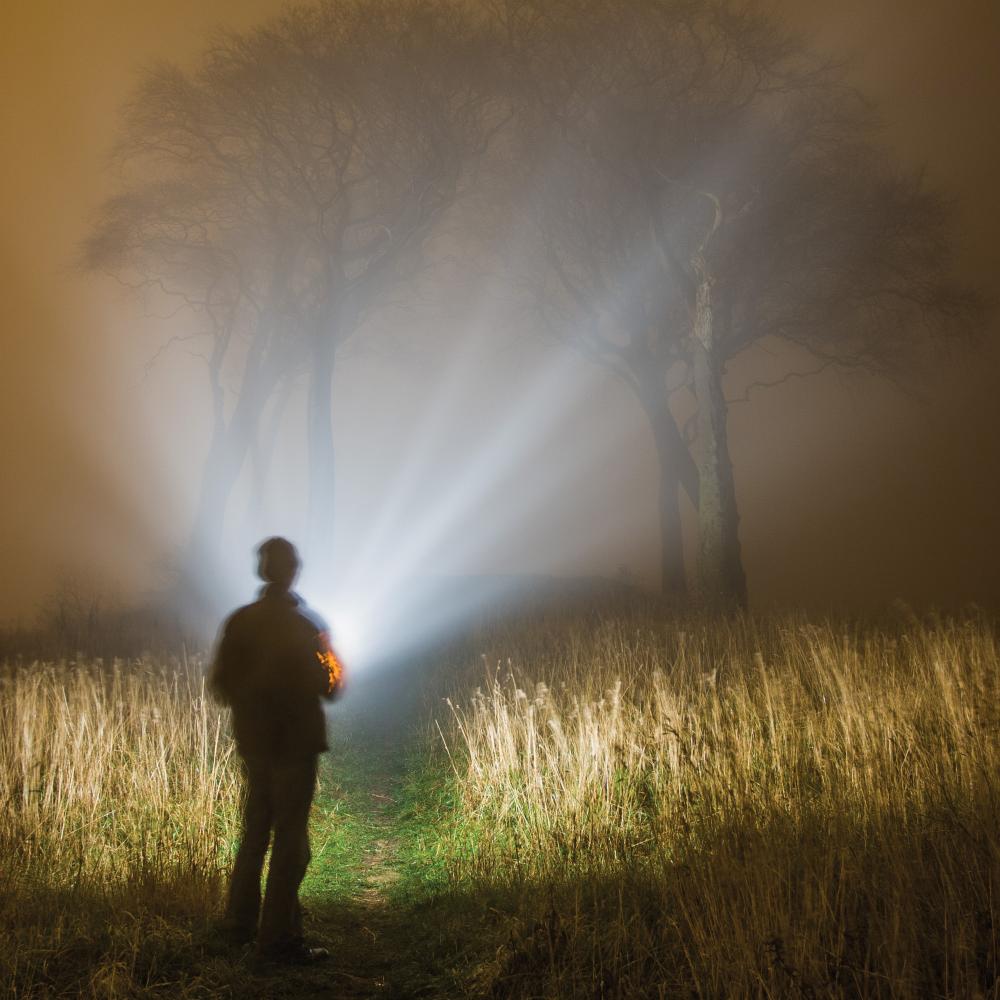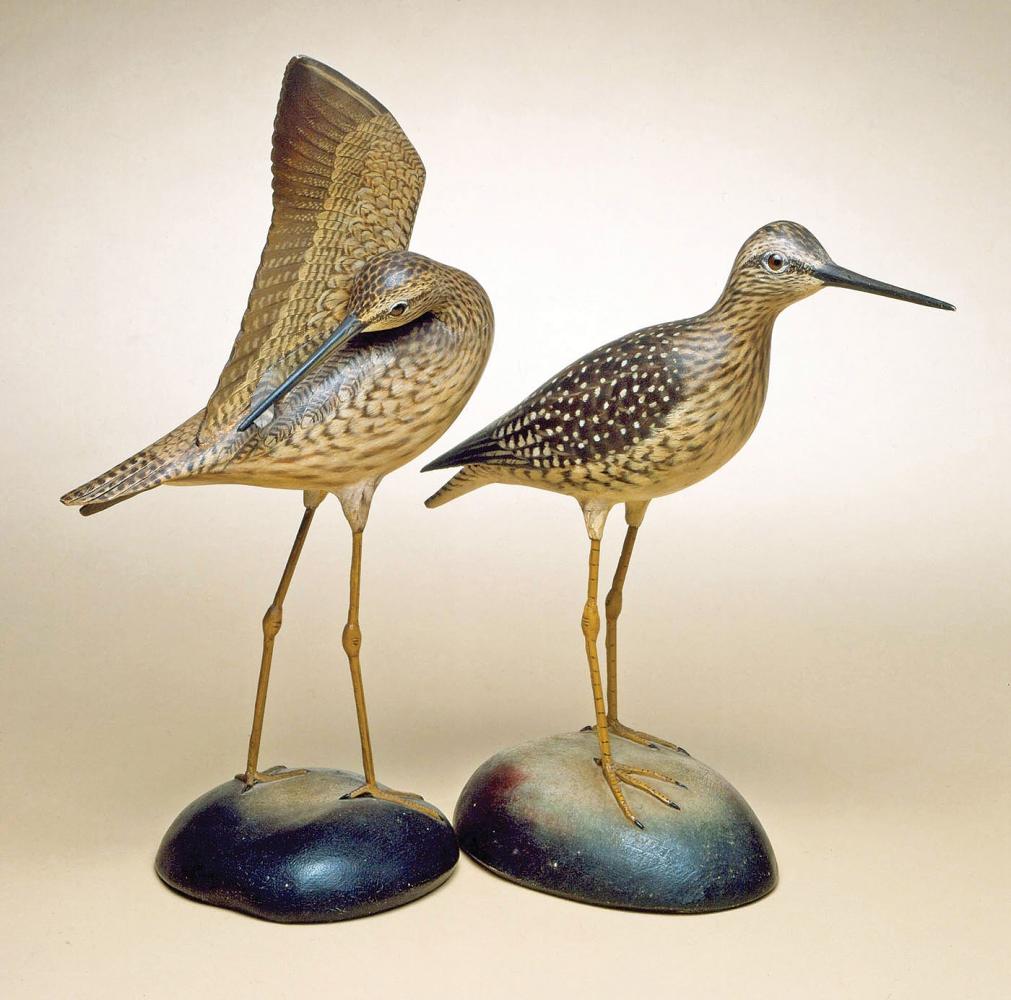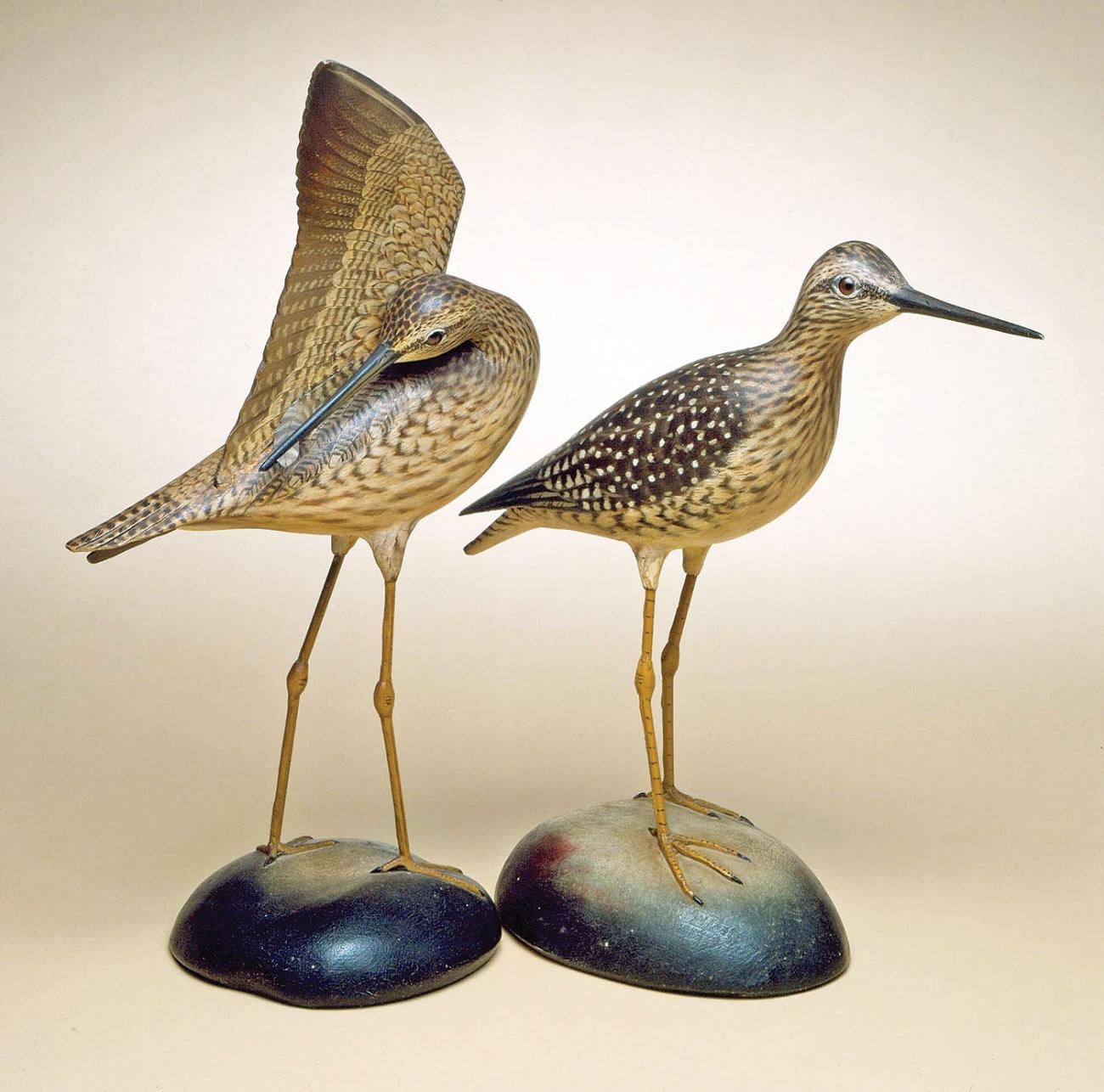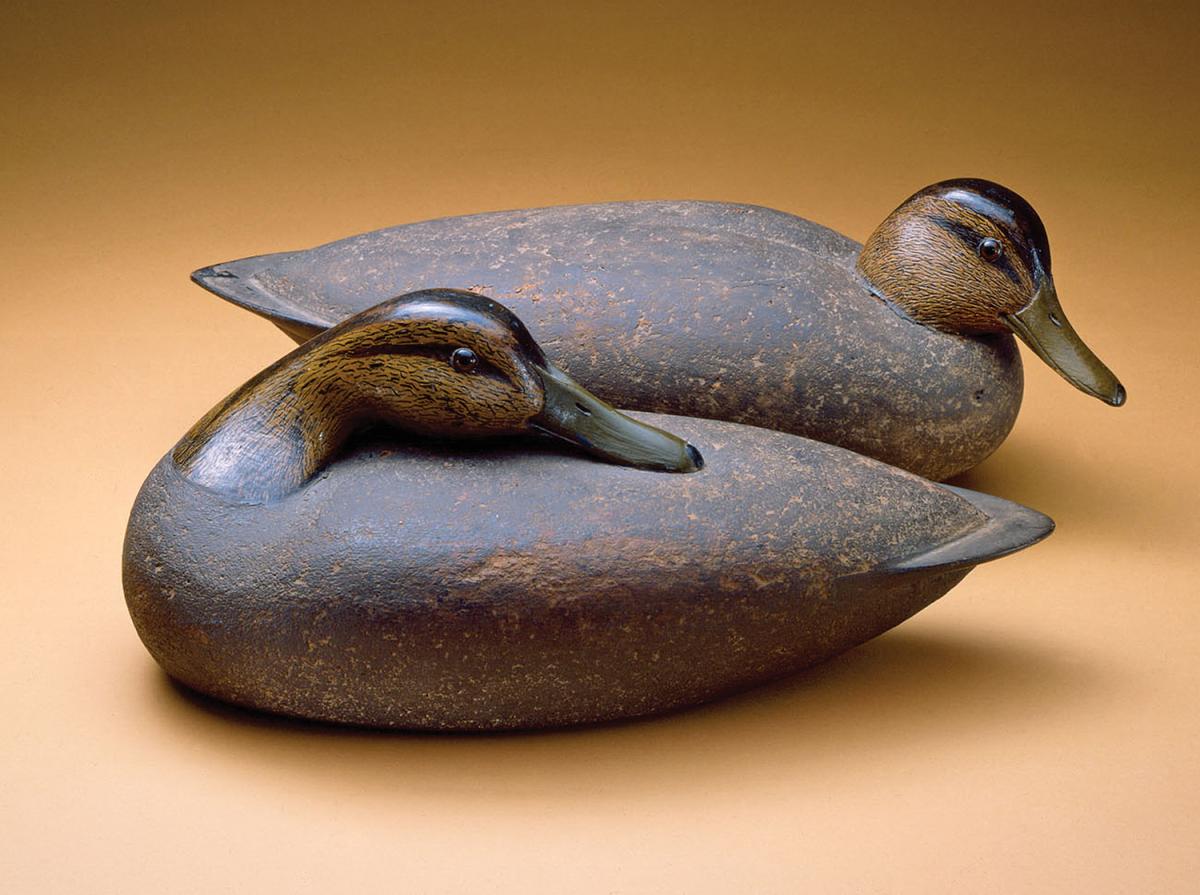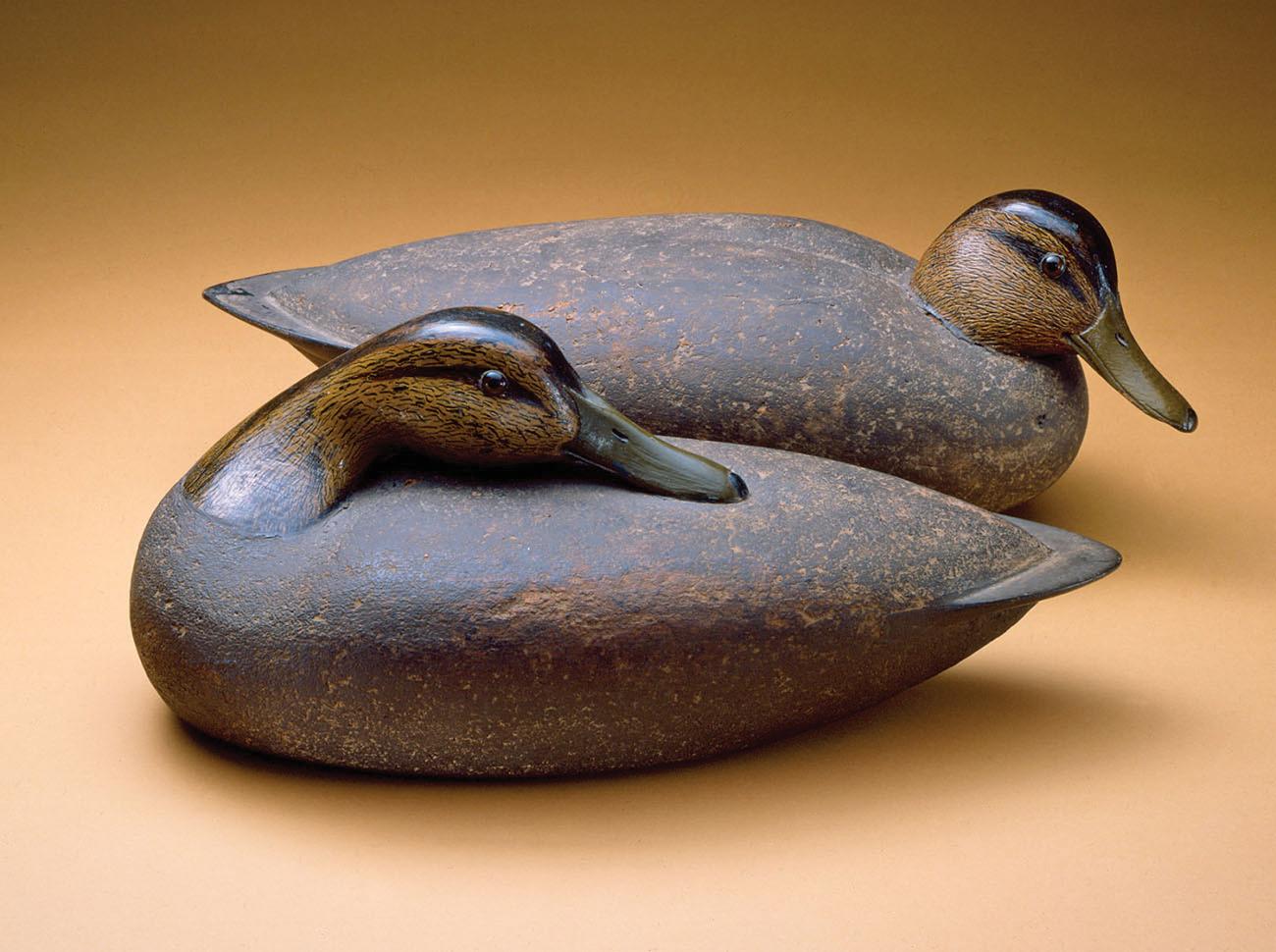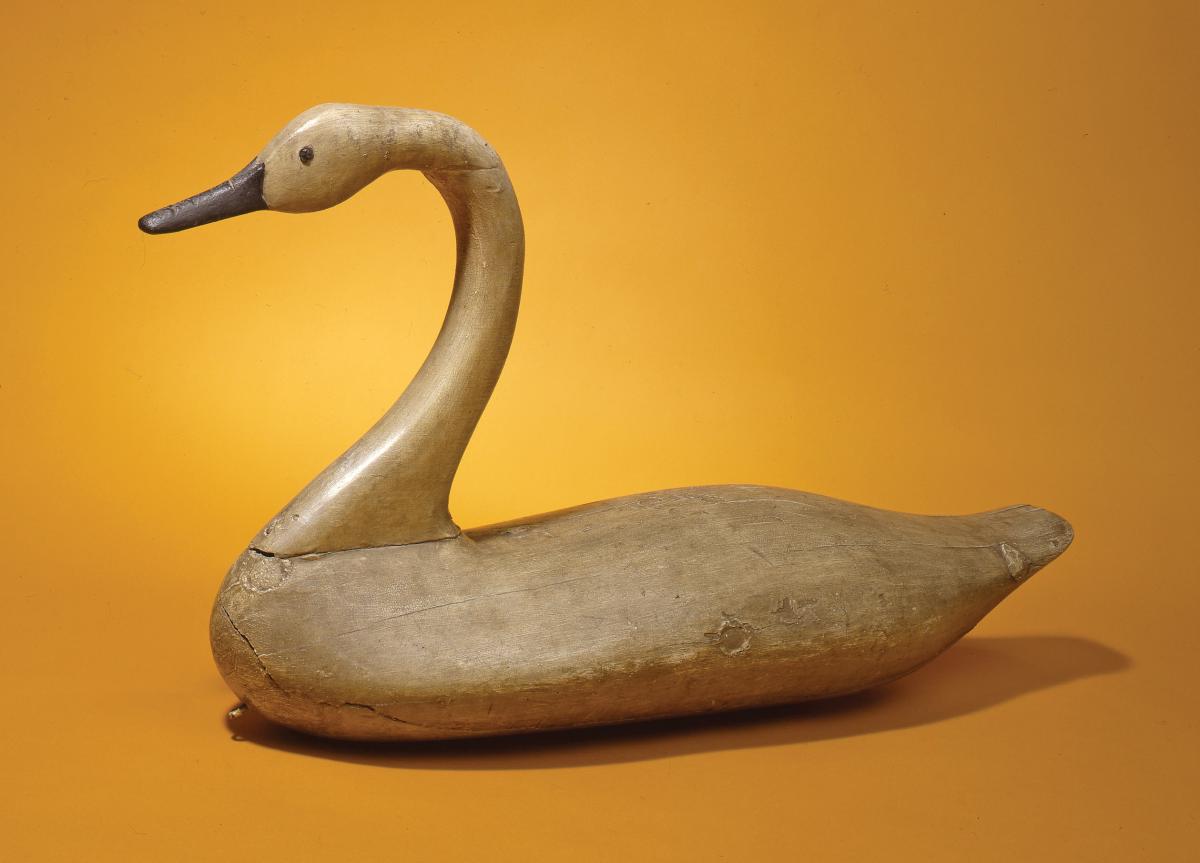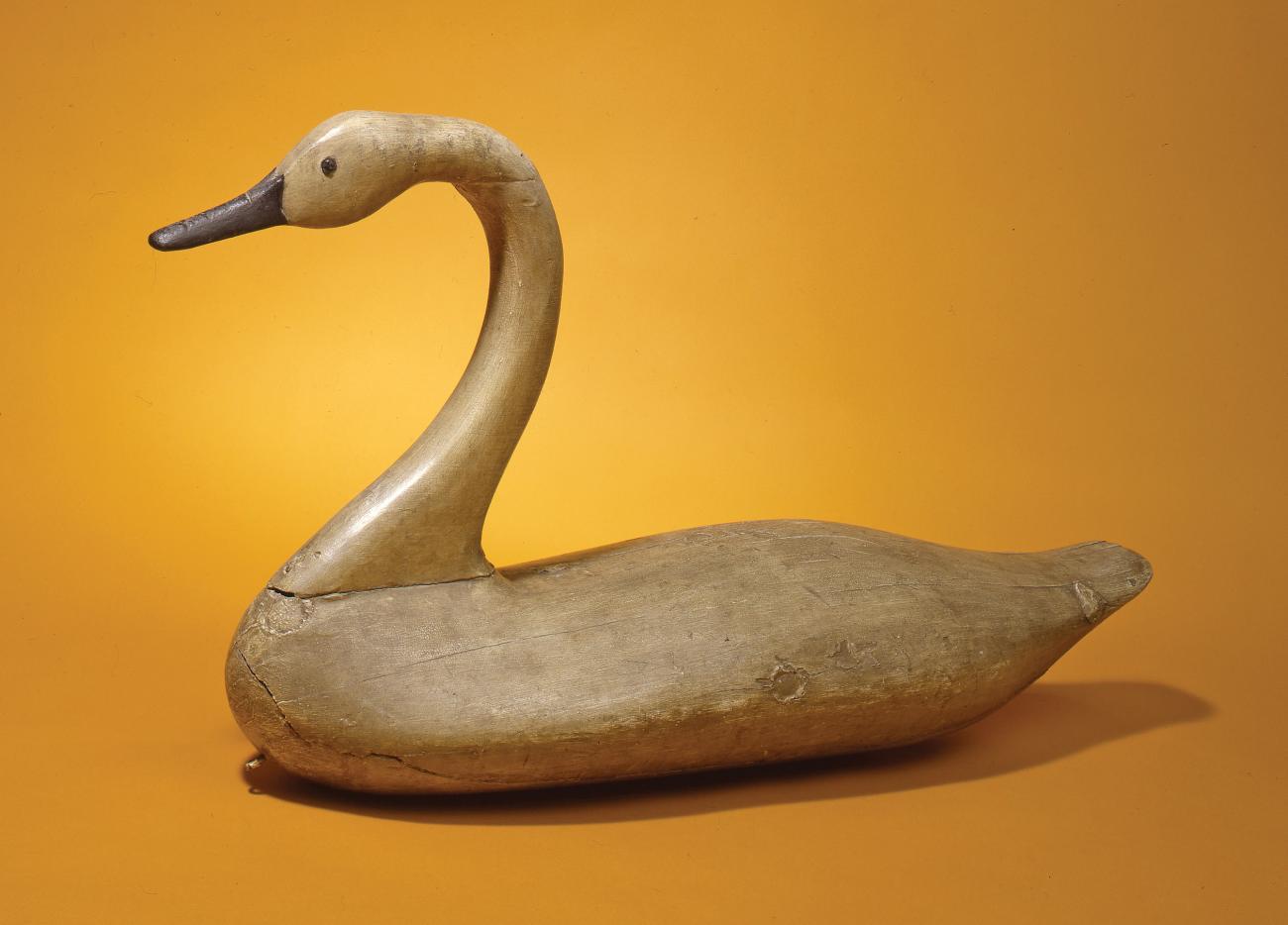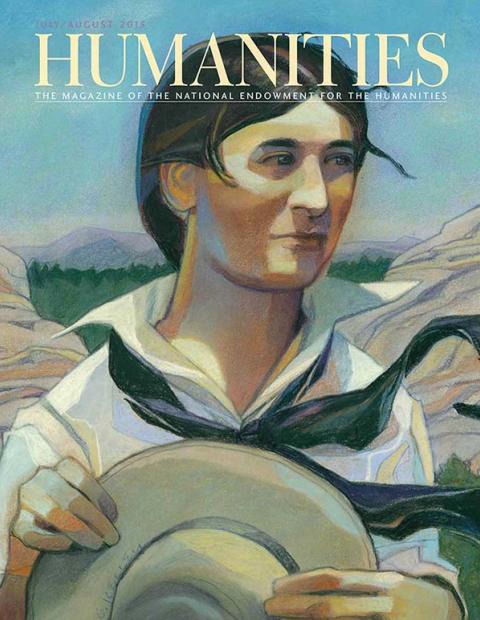Some are delicately poised to sip a cool drink through their bills. Others coast along, heads held high, oblivious to their own beauty. All of them are graceful and elegant, though none of them are alive. They belong to a vast flock of decoys in the collection of Vermont’s Shelburne Museum.
These waterfowl are a uniquely American folk art, and now they’re about to get their home spiffed up. Visitors will see them all roosting together soon in the Dorset House, built in 1832 and moved to the museum’s grounds in 1953, a year after the collection formed.
Architect, artist, and carver Joel Barber of New York City made the original gift of more than four hundred decoys. The collection now numbers nine hundred. An NEH grant is helping upgrade environmental controls, wiring, insulation, and exhibition spaces at Dorset House so that it can house nearly the entire collection. While the work is going on, part of the collection can be viewed in the museum’s Stagecoach Inn.
Preservation expert at the Shelburne, Nancie Ravenel, credits Barber with leading the way in treating decoys as a uniquely American form of artwork. “He established them as such in his book Wild Fowl Decoys,” she says in an e-mail, “by demonstrating that while decoys are found in many cultures, none has carved wild fowl in wood to the extent we have in North America for that purpose.” Barber’s book on decoys, published in 1934, has served as a voice of authority in the field.
Archaeological evidence from caves indicates that Indians in southwestern United States used decoys approximately two thousand years ago. “A French explorer in the year 1687,” Barber wrote, “records the use of stuffed bird skins on Lake Champlain. . . . It shows the white man’s acquaintance with native methods, also the Indian procedure of over two hundred years ago.”
The use of decoys in the United States reached its peak in the late nineteenth and early twentieth centuries, when hunters used hundreds of them at a time to shoot large numbers of ducks, mostly broadbills, to satisfy the New York City restaurant and millinery markets. The 1918 Migratory Bird Treaty Act brought an end to such commercial practices.
Among the Shelburne collection’s highlights are decoys carved by Elmer Crowell (1862–1952). “Crowell’s career as a carver,” says Ravenel, “began about ten years before the Migratory Bird Act. He then continued his work by making decorative bird carvings in addition to making decoys for sport. While the working decoys are well sculpted and painted, I think it is these decorative carvings, in which the bird’s poses are so lyrical and full of personality, that served to burnish his reputation. The carving is especially fine and they’re beautifully painted—particularly the shore birds.”
“Beautiful sculptural line that seems to give the piece a personality” is the strength of the decoys in the Shelburne collection, adds Ravenel. “There are also lovely examples of painted depictions of feathers, some of which use techniques we see on faux painted furniture. There’s also an impressive range of species represented.”
Swan decoys have been used as well, but not to attract other swans, which were rarely hunted. These decoys were called—and it’s no canard—“confidence” birds, signaling to other wildfowl through the diversity of the winged population that it was a safe environs in which to land. Yeah, right.

